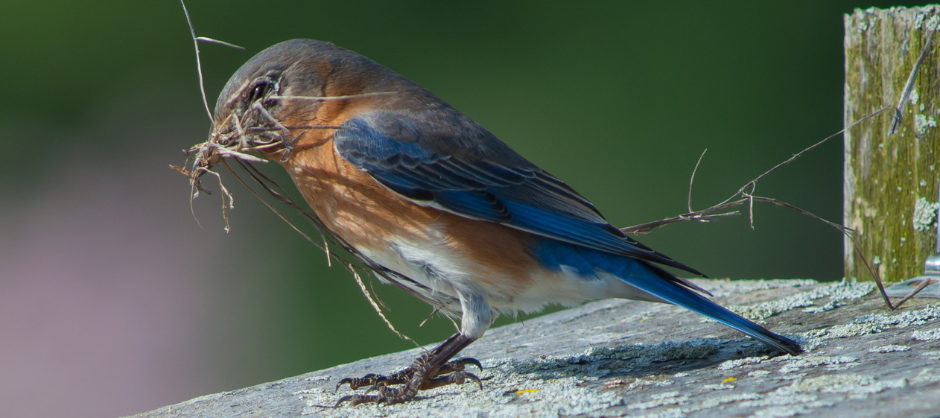
This summer, I had the joy of monitoring the 24 active bluebird houses located throughout Ney. Aside from being a beautiful native bird, Bluebirds are important to us as humans because they eat a wide variety of insects that can damage crops. Due to habitat loss and the introduction of birds such as House Sparrows and European Starlings, which take nesting sites from our native Bluebirds, our little blue friends rely partially on people maintaining birdhouses to raise their young.
This year, we had over 10 Bluebird nests, averaging 4-5 eggs per nest. Other than Bluebirds, we were also excited to see Tree Swallows, Black Capped Chickadee, and even a Great Crested Flycatcher make nests in our nesting boxes. These species are less common to find in nesting boxes, and it was definitely a treat to see them grow each week. The Swallows were one of my favorite guests and were highly protective each time I checked their nest.
The Great Crested Flycatcher was a surprise in a Bluebird house and required additional research to identify their nest. The best identifier was the use of snakeskin for nesting material. It was easily confirmed, however, when an adult was heard calling in a nearby tree.
Great Crested Flycatcher nest with a snakeskin (Photo by Sam Retz)
While we saw a great amount of success from our birdhouses, it was not an easy year by any means. Large amounts of rain and multiple heat waves added an extra challenge for all of our feathered friends. On top of difficult weather, they also dealt with competition from House Wrens. Even with the challenges this year provided, I believe It provided us with more knowledge of what we can change in the years to come to make Ney a true sanctuary for these amazing animals. – Sam Retz, Ney Naturalist
